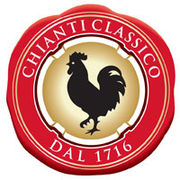 The Consorzio Vino Chianti Classico announced on February 9 that Chianti Classico docg is now a legally defined entity distinct from Chianti docg.‘This effectively cuts the umbilical cord that has continued to connect the two distinct denominations," said Giuseppe Liberatore, director of the Consorzio Chianti Classico. The Consorzio Vino Chianti Classico announced on February 9 that Chianti Classico docg is now a legally defined entity distinct from Chianti docg.‘This effectively cuts the umbilical cord that has continued to connect the two distinct denominations," said Giuseppe Liberatore, director of the Consorzio Chianti Classico.
Historically, Chianti Classico has been the original wine region for three centuries since the Grand Duke of Tuscany, Cosimo de Medici III so decried in 1716. However, due to perhaps political reasons the government expanded the territory in 1932 to include large areas of Tuscan land, which were not part of the original Chianti Classico region.
Producers in this new larger denomination started capitalizing on the name and popularity of the region, especially since the cost of production was lower and they could offer their wines at much lower prices. Chianti Classico has been one of Italy’s premium wine regions which took some beating in the sixties and seventies because of the cheap Chianti in the basket type of bottles invading the market.
The law made Chianti Classico a sub-zone of the Chianti region with the new appellation system promulgated in the early nineteen sixties; the regional boundaries were defined by the 1967 law. Consorzio Vino Chianti Classico has been fighting for the autonomy of the region and has been taking measures to check the supply of fake and counterfeit wines, due to their popularity.
In 1984 the Chianti Classico region was awarded a separate Chianti Classico DOCG. In 1996, a ministerial decree declared Chianti Classico a completely autonomous region with zone and production regulations distinct from Chianti wine. The recent ministerial decree states that within the Chianti Classico region, “it is prohibited to plant or declare in grape-growing records vineyards for Chianti DOCG”.
The fundamental differences between the two regions are the soil, lower yields, different process controls and banning of white grapes in the Chianti Classico blend-the practice which is still allowed in Chianti. For instance, Chianti Classico vineyards can have the maximum grape yield of 7.5 tons as compared to up to 9 tons /hA for Chianti. The solid extract in CC must be a minimum of 23 gms/liter compared to it being as low as 19 gms from some parts of Chianti. The CC needs a min. of 10 months of aging whereas Chianti can be ready even in 3 months.
In March 2007 Chianti Classico joined the Joint Declaration to Protect Wine Place & Origin, a global movement aimed at ensuring wine place names are protected and not abused or miscommunicated to consumers and is a part of 15 regions who jointly fight for the protection of the place names and has regions like Champagne, Rioja, Napa Valley, Western Australia, Victoria, Porto and Jerez as its members.
Primarily due to the significant price difference and also because of to lack of knowledge of the difference between the two qualities, most of the wines imported from the region are Chianti docg or Chianti Superiore docg with a very small percentage of Chianti Riserva whereas the Chianti Classico is sold mostly through on trade. The current ‘Divorce Chianti-style’ may be beneficial for region’s popularity. |